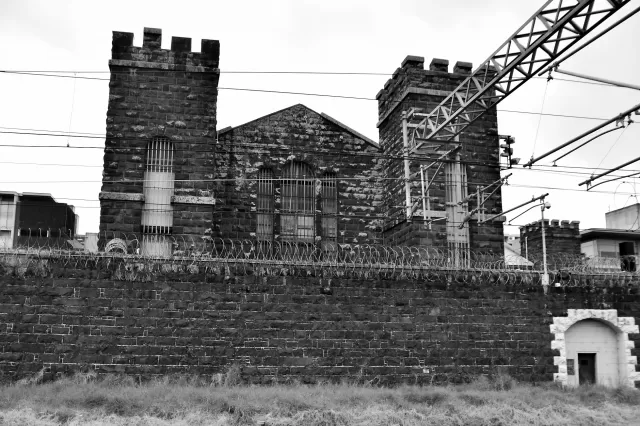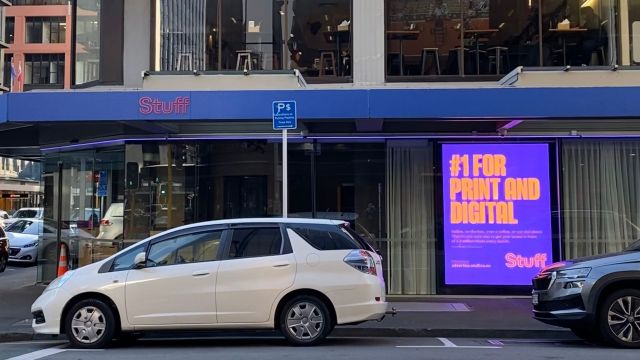Bastion Point-type protest under consideration
• November 11, 2016

Around 200 people gather to protest a housing development on sacred Māori land. Photo: Supplied / SOUL
Land occupation is being considered as a new campaign of protest action begins against an approved Special Housing Area at Ihumatao.
The first such action took place at the weekend, with a whare constructed of donated stone blocks and painted by local artists erected on the land, deemed wāhi tapu or sacred.
Around 200 people took part in the family event, which also featured food, singing, dancing, painting and speeches.

Locals make their mark on the walls of the whare at Ihumatao. Photo: Supplied / SOUL
Fletcher Residential is planning to build 480 new houses on around 32 hectares of land. In May the Special Housing Area status of the land was upheld by Auckland Council, despite strenuous opposition.
Save Our Unique Landscape (SOUL) is a movement set up to oppose the development and promote mana whenua interests. Spokesperson Pania Newton said the building of the whare is just the beginning.
“It’s our intention to progressively add to the [whare] structure to educate people about why this land needs to be saved,” she said.
“This is just the first in a series of active protests on the land, we’re looking to amp up our campaign over the next couple of weeks.”

The colourful whare is a work in progress. Photo: Supplied / SOUL
Ms Newton said some in the community have been discussing the possibility of occupying the land as Ngāti Whātua did at Bastion Point in 1987.
Māngere MP Su’a William Sio, who tabled a petition in Parliament with 4000 signatures against the housing development, supports the increased protest action.
“They have exhausted all the avenues available in trying to lobby and advocate their cause and there is nothing left now but for them to heighten their protest activities.
“I’m not saying people should break the law, but the community have a right to protest unjust laws.”
He said he would stand in solidarity with his community if they took the action of land occupation.
“If that’s the wish of the community I will have no other option but to support the community.”

The stone blocks are decorated with art painted by locals. Photo: Supplied / SOUL
Archaeologist Dave Veart has studied the area since the early 1980s. He told Te Waha Nui the area was the last site of its kind in Auckland.
“We know there are a whole lot of caves with [Māori] burials in, and it seems probable there are burials elsewhere on the site.”
Mr Veart added it would be a tragedy for the site to be made into housing. He believed it should be returned to public ownership.
The Minister for Housing, Nick Smith, was approached for comment by Te Waha Nui but did not return calls.
Dr Smith has previously met SOUL campaign members to discuss their concerns.


Kiwi journalists migrating from traditional media - a loss or a win for journalism?
Grace Symmans • September 3, 2024



Kiwi journalists migrating from traditional media - a loss or a win for journalism?
Grace Symmans • September 3, 2024



